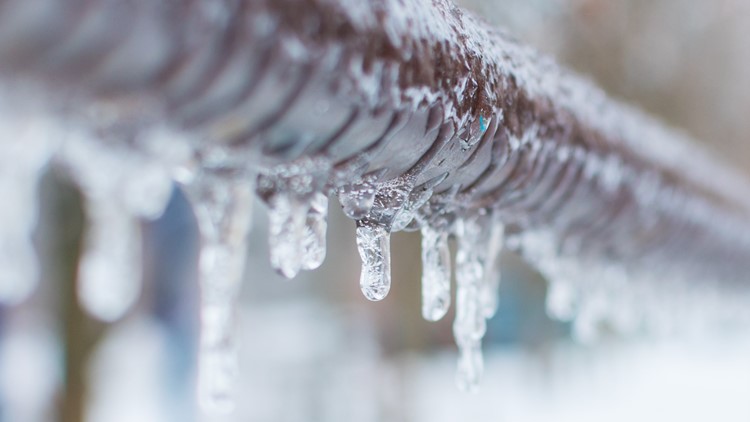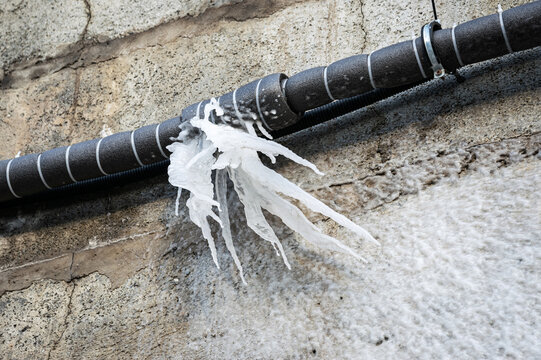Important Tips to Prevent Frozen Pipes in Cold Weather
Important Tips to Prevent Frozen Pipes in Cold Weather
Blog Article
On this page in the next paragraphs yow will discover a good deal of really good help and advice with regards to Winter Plumbing Precautions: Preventing Frozen Pipes.

Cold weather can damage your pipes, particularly by freezing pipelines. Here's exactly how to stop it from happening and what to do if it does.
Intro
As temperatures drop, the danger of frozen pipelines rises, possibly causing costly repair services and water damages. Understanding exactly how to stop frozen pipes is important for homeowners in cold environments.
Recognizing Icy Pipes
What causes pipelines to freeze?
Pipes ice up when exposed to temperature levels listed below 32 ° F (0 ° C) for expanded durations. As water inside the pipes freezes, it increases, putting pressure on the pipe wall surfaces and potentially causing them to break.
Dangers and problems
Icy pipes can lead to water interruptions, building damages, and pricey repair services. Burst pipes can flood homes and trigger comprehensive structural damages.
Indications of Frozen Pipeline
Determining icy pipelines early can prevent them from breaking.
How to identify frozen pipes
Look for reduced water flow from taps, uncommon smells or sounds from pipes, and visible frost on exposed pipelines.
Prevention Tips
Shielding at risk pipelines
Cover pipes in insulation sleeves or make use of warm tape to safeguard them from freezing temperatures. Focus on pipes in unheated or outside locations of the home.
Heating strategies
Keep interior areas properly heated up, specifically areas with plumbing. Open cupboard doors to enable warm air to distribute around pipes under sinks.
Safeguarding Outdoor Pipes
Garden pipes and exterior taps
Separate and drain pipes garden tubes before winter. Mount frost-proof faucets or cover outdoor taps with shielded caps.
What to Do If Your Pipelines Freeze
Immediate actions to take
If you suspect icy pipes, maintain taps open to soothe stress as the ice thaws. Utilize a hairdryer or towels soaked in warm water to thaw pipes slowly.
Long-Term Solutions
Architectural modifications
Consider rerouting pipelines away from outside walls or unheated locations. Include additional insulation to attics, cellars, and crawl spaces.
Upgrading insulation
Buy high-quality insulation for pipes, attic rooms, and walls. Proper insulation helps preserve regular temperatures and lowers the risk of frozen pipes.
Verdict
Protecting against icy pipelines requires aggressive actions and fast actions. By recognizing the reasons, signs, and safety nets, house owners can safeguard their pipes throughout cold weather.
6 Proven Ways to Prevent Frozen Pipes and Protect Your Home
Disconnect and Drain Garden Hoses
Before winter arrives, start by disconnecting your garden hoses and draining any remaining water. Close the shut-off valves that supply outdoor hose bibs and leave the outdoor faucet open to allow any residual water to drain. For extra protection, consider using faucet covers throughout the colder months. It’s also important to drain water from any sprinkler supply lines following the manufacturer’s directions.
Insulate Exposed Pipes
Insulating your pipes is an effective way to prevent freezing. Pipe insulation is readily available at home improvement stores and is relatively inexpensive. Pay close attention to pipes in unheated areas such as the attic, basement, crawl spaces, or garage. Apply foam insulation generously to create a buffer against the cold. You can also wrap your pipes in heat tape or thermostat-controlled heat cables for added warmth.
Seal Air Leaks
Inspect your home for any cracks or openings that could let in cold air. Seal any holes around the piping in interior or exterior walls, as well as the sill plates where your home rests on its foundation. Additionally, make sure to keep your garage door closed unless you’re entering or exiting. Leaving it open creates a significant air leak that can lead to frozen pipes.
Allow Warm Air Circulation
During cold snaps, it’s essential to allow warm air to circulate evenly throughout your home. Leave interior doors ajar to promote better airflow. Open kitchen and bathroom cabinets to help distribute heat consistently around the rooms. If you have small children or pets, be sure to remove any household chemicals or potentially harmful cleaners from open cabinets for safety.
Let Faucets Drip
A small trickle of water can make a big difference in preventing ice formation inside your pipes. When temperatures drop significantly, start a drip of water from all faucets served by exposed pipes. This continuous flow helps prevent the water from freezing. Additionally, running a few faucets slightly can relieve pressure inside the pipes, reducing the chances of a rupture if the water inside does freeze.
https://choateshvac.com/6-proven-ways-to-prevent-frozen-pipes-and-protect-your-home/

We were made aware of that report about Preventing and dealing with frozen pipes through a buddy on a different domain. Are you aware of somebody who is excited by the topic? Be sure promote it. Thanks a bunch for being here. Please pay a visit to our blog back soon.
Click Here Report this page